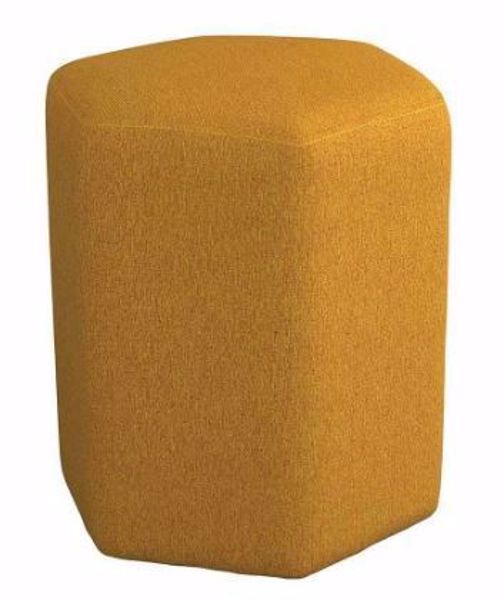Occasional Yellow Stool
Is you're Poo looking pale?
Just as the shape, consistency and regularity of our bowel movements tell a story about our digestive health, so too does the color of our poo.
- Dec 18, 2018 Yellow stool, also known as pale stool, may be an indicator of a serious medical illness. There are several medical conditions that may cause yellow bowel movements 3 4.If bowel movements that are yellowish in color are seen, an examination by a physician may be required to rule out a serious medical issue 3.
- Nov 02, 2020 What is yellow stool? Although the color of stool can be affected by different foods and medications, it is typically brownish due to digestion of bile salts, digestive agents made by the liver and stored in the gallbladder. A reduction or absence of bile salts can cause the stool to become yellow or pale.
Occasional yellow stool. Occasional loose stool. Occasional dark stool. Occasional pale stool. Occasional flat stool. Occasional mucus in stool. Occasional light colored stool. Probiotics black stool. Connect by text or video with a U.S. Board-certified doctor now — wait time is. Foul-smelling stools have an unusually strong, putrid smell. In many cases, foul-smelling stools occur due to the foods people eat and the bacteria present in their colon. Occasional blood when passing stool. In this time i had three days passing a lot of blood when passing stool. The bleeding stopped by the 4th day so thought it was hemorroids. Also have a ridge in my read more.
Occasional Yellow Stool
The colour can tell us the type of food we've eaten and how effectively we're absorbing nutrients. It can also mean a bowel (GI) condition or whether you're overindulging on kale smoothies
Stools come in a range of colors. Various shades of brown and green are considered normal.
But if you’re stool is pale in color should you be worried?
Let's find out.
As we know, normal, healthy poo comes in different shades of brown.
The brown colour is the result of two substances produced by the liver.
The first is bile, a fluid that helps breakdown fats and bilirubin which contains old red blood cells.
So, pale, yellow or clay colored stools could mean a lack of bile production.
There are many reasons for this but the most common are...

- The liver is not producing enough bile
- A blockage preventing or limiting the release of bile into the GI tract
Bile Duct Blockage
Bile is stored in the gall bladder before being released into the small intestines.
When released the bile flows through tubes known as bile ducts.
If the ducts become blocked the bile cannot be secreted which can result in a pale stool.
In medical terms this is referred to as a bile duct obstruction or a biliary obstruction

A blockage of the bile duct can be caused by;
- Inflammation of the bile duct
- Pancreatic tumors
- Gallstones
- Cysts
A bile duct obstruction can cause discomfort around the abdominal area especially in the upper right side. This is due to the pressure caused by the build-up of bile in the gallbladder.
If you continue to produce pale stools and you're experiencing abdominal pain have the doctor check it out.
Did you know red blood cells have a life span of 120 days?
When cells die the liver metabolizes them into an orange substance called bilirubin. Bilirubin is then mixed in with the bile as it enters the digestive system.
However, an obstruction could stop bilirubin mixing in with the bile.
As the bilirubin builds up in the liver it can cause jaundice turning the skin and whites of the eyes yellow.
What's more, bilirubin colors the stool brown. A lack of bilirubin can also result in a pale colored stool.
Rotavirus Gastroenteritis
Pale fatty stools (steatorrhoea) can be caused by a rotavirus that affects the bowels.
The stomach and bowels can become severely inflamed resulting in gastroenteritis.
A rotavirus is the common cause of severe diarrhoea in babies and young infants resulting in half a million deaths around the world.
Studies show that the rotavirus can hinder the digestion of fat and the pigmentation of the stool. (1)
Medications
Certain medications indirectly cause clay-colored stools by overworking the liver.
These include:
- Non-steroidal anti-inflammatory drugs
- Antibiotics
- Birth control pills
- Anabolic steroids
Although rare, drug induced hepatitis causes inflammation of the liver due to the toxicity of certain medications, drugs, herbal remedies and vitamin pills.
Other Complications
Complications with the liver such as cirrhosis can also inhibit the production of bile.
A pale stool can be the result of eating foods you don’t normally eat or when you’re taking a course of medications.
In cases like these a change in stool color should be temporary.
If you're pale stools continue for more than 3 weeks it may indicate an underlying health problem and a visit to the doctor would be in order.
Digestive Enzymes Deficiency
Enzymes are essential for a healthy digestion.
The body produces enzymes in the pancreas which are released into the small intestines to breakdown and absorb fats, proteins and carbohydrates.
If you’re not producing enough lipase, the fat digesting enzyme, your stool can contain high levels of undigested fats which can result in a pale colored stool.
A pale stool can also a be caused by eating a high fat diet.
Chronic Inflammatory Bowel Diseases (IBD)
Colitis, Crohns disease and Celiac disease are chronic conditions causing inflammation to the intestinal tract.
Inflammation can disrupt and compromise your digestive system resulting in several symptoms ranging from;
- chronic constipation
- pale colored stools
- excessive gas
- indigestion
- diarrhea
- bloating
Many IBD symptoms are made worse by eating certain foods that trigger these symptoms.
For example, foods containing wheat or gluten can often trigger reactions in people with Celiac disease.
What Foods Cause Pale Stools
Certain foods can change the color of your stool.
For example, beets can change the color of your poop to dark red and eating alots of veggies can give your stool a green hue.
But are there foods that lighten stool color?
Yes. Foods high in fat can lighten the color of your stool. Food coloring in foods can also change stool color.
If you've recently changed diet and the timing corresponds with a change in stool color. Its likely a diet issue.
On the other hand, if the remain light and clay colored it could mean an underlying health condition.
Is Your Diet Causing An Unbalanced Digestion?
Many digestive disorders including the ones mentioned above can all be sourced back to an unbalanced digestive system.
Growing medical evidence shows the growing epidemic of digestive disorders are a result of an unhealthy digestive system.
The health of your digestive system is determined by the amount of friendly bacteria that live in the lower digestive tract. These microscopic bacteria are responsible for;
- inhibiting growth of harmful gut bacteria and yeast infections
- repairing and promoting a healthy intestinal tract
- lowering allergic inflammatory reactions
- boosting immune system
- reducing inflammation
- fighting infections
Unfortunately, most of our digestive systems are out of balance as a result of eating unhealthy foods.
Processed and high fat foods contain little to no nutritional value and this actually starves your good bacteria.
As a result, the good bacteria erode away causing an imbalance. Conversely, processed foods, especially refined flour and sugar feed the bad bacteria.
Once the healthy balance of micro-flora are disturbed, intestinal infections can spread compromising the digestive systems vital functions – digestion, absorption and elimination.
Prebiotics – The Key To Digestive Health
The key to restoring balance can be found in whole natural foods, especially those high in prebiotic fibers.
These insoluble fibers have been proven to promote the growth of your good bacteria and at the same time killing off harmful disease causing pathogens.
It turns out, the kiwifruit is one of the planets richest sources of digestive health boosting prebiotics.
What’s more, the kiwi’s skin is rich in the phenolic compounds. These powerful antioxidants can prevent the spread of harmful bacteria and strengthen your immune system.
In addition, the digestive enzymes found in the kiwifruits pulp can boost your levels of pancreatic enzymes, which enables you to digest foods more efficiently.
The kiwifruit is high in soluble fiber, which improves bowel movements and removes the build up of toxins in your colon.
Of course, the taste of the kiwifruit, especially its skin is not to everyone’s liking and buying fresh fruit everyday is expensive. That’s why Kiwi Klenz, a remarkable 100 per cent prebiotic supplement can really help you.
Xtend Life the makers of Kiwi Klenz use a special cold water extraction system that preserves all the fruits natural enzymes, prebiotics, phenolics and soluble fiber.
It turns out, Kiwi Klenz is so concentrated that one easy to swallow capsule provides the same nutritional value of 2 whole ripe kiwifruit including the prebiotic rich skin.
And to give you complete piece of mind, Xtend Life stands by its 12 month 100% satisfaction guarantee so that you can try Kiwi Klenz risk free.
“I started taking Kiwi Klenz a couple of months back at the rate of 2 per day (1 if the morning and 1 before dinner) and have found some good results with it.
The first major result I found is that I am digesting dietary fats much better, as I used to get a slight gall bladder/liver pain if I consumed foods cooked in oil, or if I ate red meat.
Since taking Kiwi Klenz I have had no issues at all. The second pleasing change is that my blood sugar levels have been more stable.
I've had to be careful before when consuming carbohydrate meals, and at times I had wild fluctuations in my levels. Again this has not happened since taking Kiwi Klenz.
As for any other changes, I no longer have acid reflux (even after drinking the odd coffee) and I am generally a lot less bloated.”
Paul, New Zealand
Is Occasional Yellow Stool Normal
References:
(1) Virus diarrhoea associated with pale fatty faeces - Department of Clinical Microbiology, University College Hospital, London.